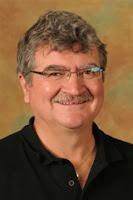The last exercises are done, the last marks are submitted, and the virtual classroom door swings shut. A landmark in Northern training concluded last week, and the results surpassed expectations.
The Internet and new communications technologies have transformed the way we bank, converse, play games, watch movies, and read our news. They've also changed the way we learn. Educators around the world are now delivering courses through the Internet that range from Classical Greek to Workplace Safety.
Earlier this year Aarluk Consulting teamed up with the Municipal Training Organization and Nunavut Arctic College to adapt and deliver five courses from the popular Municipal Government Program (MGP) online. The five core MGP courses cover Introduction to Northern Government, Management Communications, Public Sector Finance, Human Resources Management and Introduction to Computers. In the past, learners were flown from across the Territory to participate in classroom sessions. That would mean an absence of up to two weeks, training in a new community and environment, and a mountain of work on their return.
Enter online learning. The new approach spread the training over three weeks. Learners attended a 'class' with their virtual peers a couple of times a week, and worked on courses on their own time - sometimes during the day, sometimes during the evening and on the weekend, but always with a dedicated e-teacher in the background, technical support, and other students learning at the same pace and style.
We have to admit to some pre-course jitters in the days leading up to the first delivery. Many Nunavut communities have trouble accessing the Internet, and we weren't sure students would establish the same sense of community and mutual support that a classroom could achieve.
No worries. The online delivery was a complete success. Some of the comments made by the students include "I am hooked, I want to learn more", "This course was way better than I thought it was going to be - very interesting", and "I couldn't have done this without the support my employer and my family gave me - I'm so thankful to have completed these courses!"
Many students started out not really knowing what to expect (as did the instructor!) and much to everyone's delight, an online learning community was quickly established. Several sessions of synchronous learning took place each week; everyone discussed key questions arising from the course material online, dealt with technical issues, and in general, got to know each other in the virtual world. Everyone spent several hours working through the course material, all of it online. Quizzes, assignments and posting one's thoughts in an interactive forum were all part of the course that learners pursued on their own time.
There were the usual technical glitches, of course; but thanks to the instructors, the technical support team, and support on the ground in the communities from Arctic College and SAOs, these were quickly solved, and challenges often became great learning opportunities.
With the first batch of courses done, reflection can take place. More than one student commented that they wouldn't have been able to finish these courses if they had have been required to travel to complete them - this online method of training opens many new doors for adult learning.
Kudos to a great team. There are too many to thank - you all know who you are - but we would especially like to tip our hats to:
- all those at Arctic College who supported the program, including Jason Brown, Fiona Buchan-Corey and Mike Shouldice;
- the folks at the Municipal Training Organization, and especially Matthew Ayres and Aseena Allurut;
- the Aarluk team, including Michelle Turpin, Scott Black and Kory Goulais (instructors), Neil Burgess (Moodle Wiz and Instructional Design), Terry Rudden (andragogical review and quality control) and Chuck Gilhuly (Project Management);
- the SAOs and Arctic College staff who leaped into the breach and helped out with local problem solving when needed;
- and last but never least, the wonderful participants whose willingness to commit their time and patience to this project made it the success it was. Kujannamik!






















